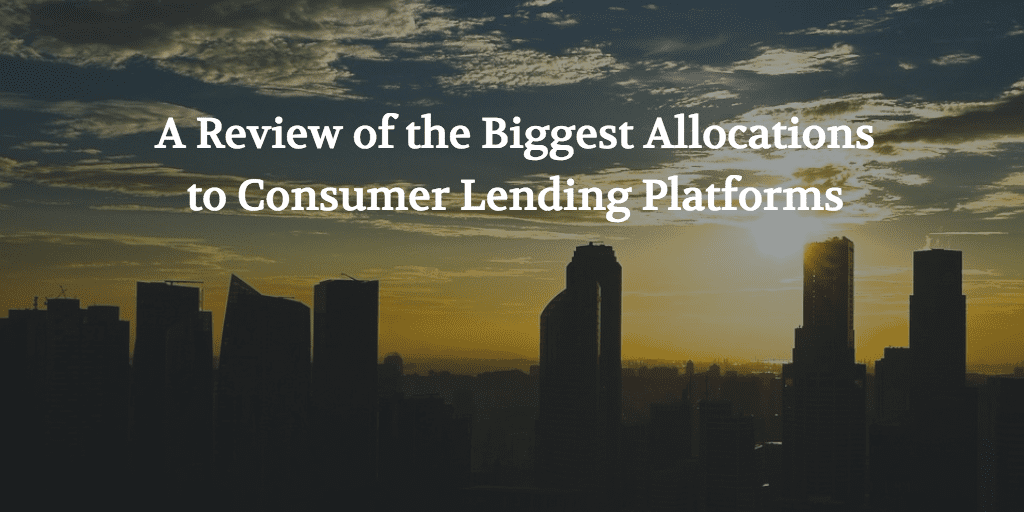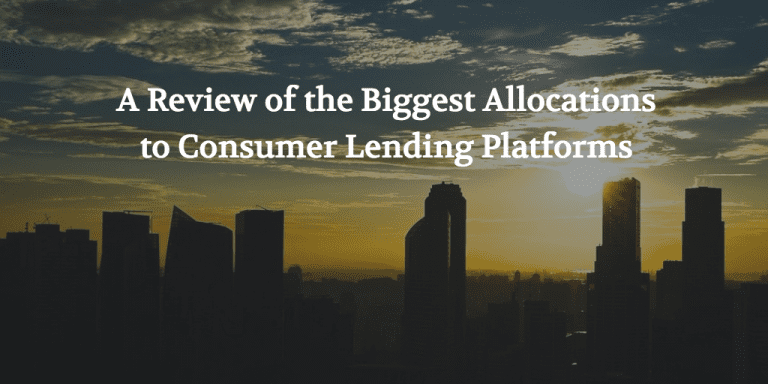
With worldwide rates continuing to stay low investors continue to look at alternative fixed income assets to earn larger returns. Online lending platforms offer a stable environment for higher yielding products and three large investors have made big plays in the last year.
Credigy, a U.S. subsidiary of National Bank of Canada struck a $1.3bn purchase program with Lending Club. Aegon, Dutch provider of life and annuity insurance products, will invest $1.7bn in loans issued by the German based Auxmoney platform. NewOak, New York-based asset management and institutional advisory firm, partnered with Canadian platform LendingArch to purchase up to $2bn in consumer loans.
Now, those three commitments represent the largest investment commitments to date coming from one firm but by far the largest commitment of all is the $5bn consortium deal for Prosper loans. Here several firms have combined to form a new entity that has been buying Prosper loans for several months. The firms are Jefferies Group LLC, Third Point LLC, Soros Fund Management and New Residential Investment Corp.
These large deals have given the online lending industry a big boost after recent turmoil and the nature of the assets allows for investors to see results fairly quickly. The trend of these sizable allocations shows that the consumer space is in a strong position to provide investors with the type of yield they are more accustomed to seeing.
These platform CEOs all say that big investors like these firms allow them to diversify their funding sources and create a more stable environment. This also helps to create more credibility to the fintech industry in general. One of the bigger barriers to entry that fintech companies have seen is that asset allocators like pension funds, insurance companies and family offices don’t have enough knowledge to be willing to allocate some of their alternative investment capital.
When big names like Credigy, NewOak and Aegon pour in well over $1bn each into the space it can help to make other investors begin looking that way. The best way to look at an asset class like online consumer lending is to think of it as a space that banks have largely controlled for many years. Since the financial crisis banks have pulled back on any products deemed outside their narrow credit box, though when examining the types of borrowers these firms target we are not talking about subprime borrowers.
These are carefully underwritten borrowers who for the most part fall on the prime end of the credit spectrum, though those with higher risk appetites can potentially get a considerable higher yield if they are willing to move into D, E and F grade loans.The more allocations we see of this nature will help more clients of wealth managers to begin seeing this as a high yielding, short duration and low volatile play. The fear of the unknown is really the biggest problem most platforms are facing today.
These partnerships are all structured in their own unique fashion and show the versatility of this industry as well. NewOak has taken on an advisory role with LendingArch, providing insight on capital markets, credit, growth, and additional business opportunities. Aegon is looking to promote social participation and take leading role on financial inclusion through digital innovations in their partnership with Auxmoney. Credigy is structured in a more traditional way, after extensively review loan performance at Lending Club they wanted to get a product that brought back more yield. The Prosper consortium are buying passively across the platform with the intention to securitize these loans after a holding period.
Fintech has a lot of untapped opportunity, I think it is fair to say in the coming years we will continue to see more partnerships and investment in the space. Fintech lenders have one sizable advantage over banking, the industry can be a lot more nimble and versatile; with partners, banks must follow a pretty rigid structure. This trait can help to spur a lot more collaborations like we have seen in the past year and if that happens there is no telling as to where the industry is headed next.


